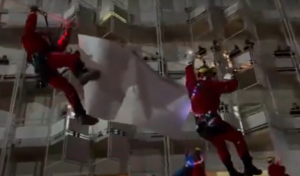SpaceX’s latest Starship prototype, SN11, took to the skies over Texas on Tuesday morning (March 30), following a 24-hour delay.
That wasn’t the first delay for the test. On Friday (March 25), SpaceX hoped to conduct the test flight after changing out one of the craft’s three Raptor engines. Ultimately the test was moved to Monday and then finally happened early Tuesday morning, when the Starship SN11 rocket blasted off from SpaceX’s Starbase test site near Boca Chica Village in South Texas at 8:00 a.m. local time (9:00 a.m. EDT, 1300 GMT).
The rocket soared to an altitude of 6.2 miles (10 kilometers) before beginning the landing procedure. But at nearly six minutes into the flight, SpaceX’s broadcast cameras cut out. “Looks like we’ve had another exciting test of Starship Number 11,” John Insprucker, launch commentator for SpaceX, said during the broadcast. “Starship 11 is not coming back, do not wait for the landing.”
Like its predecessors, SN11 did not survive its brief flight, exploding during the test, although the foggy conditions in Boca Chica made it difficult to see.
Beetle-mounted camera streams insect adventures
Discovering the tomb of the last Byzantine Emperor Constantine XI Paleologos’ decendent (photo)
The flight, which was the company’s second flight test of a Starship rocket this month, was originally planned for Monday afternoon, but was pushed back when an inspector from the Federal Aviation Administration (FAA) could not make it to Boca Chica in time for the launch. (The agency oversees commercial space launches, and needs to have a representative on site for all Starship launches.)
Read more: Space
Ask me anything
Explore related questions





